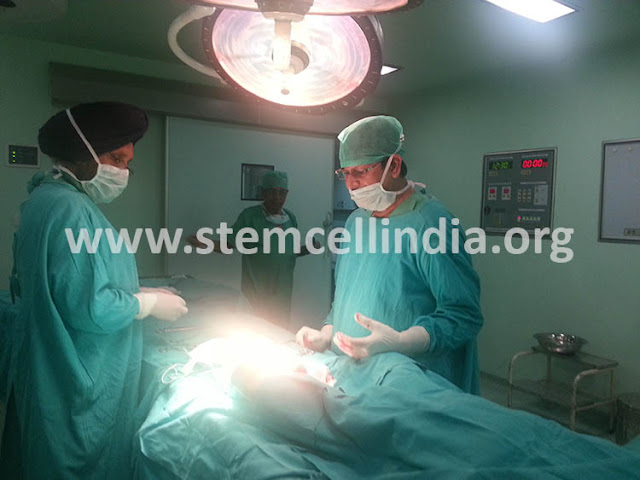Stem Cell Therapy in Duchenne muscular dystrophy (DMD)
Duchenne muscular dystrophy (DMD) is a genetic disorder characterized by progressive muscle degeneration and weakness due to the alterations of a protein called dystrophin that helps keep muscle cells intact. DMD is one of four conditions known as dystrophinopathies.
Duchenne muscular dystrophy (DMD) is a severe type of muscular dystrophy that primarily affects boys. Muscle weakness usually begins around the age of four, and worsens quickly. Muscle loss typically occurs first in the thighs and pelvis followed by the arms. This can result in trouble standing up. Most are unable to walk by the age of 12. Affected muscles may look larger due to increased fat content. Scoliosis is also common. Some may have intellectual disability.Females with a single copy of the defective gene may show mild symptoms.
The disorder is X-linked recessive. About two thirds of cases are inherited from a
person's mother, while one third of cases are due to a new mutation. It is
caused by a mutation in the gene for the protein dystrophin. Dystrophin is important to maintain the muscle
fiber's cell membrane. Genetic testing
can often make the diagnosis at birth. Those affected also have a high level of
creatine kinase in their blood.
Although there is no known cure, physical therapy, braces, and corrective surgery may help with some symptoms. Assisted ventilation may be required in those with weakness of breathing muscles. Medications used include steroids to slow muscle degeneration, anticonvulsants to control seizures and some muscle activity, and immunosuppressants to delay damage to dying muscle cells. Gene therapy, as a treatment, is in the early stages of study in humans. A small initial study using gene therapy has given some children improved muscle strength, but long term effects are unknown as of 2020.
Duchenne Muscular Dystrophy is an X-linked recessive genetic disease. Worldwide, around 1 in 3500 boys suffer from DMD. The child is usually normal at birth but the disease onsets around 3 years of age. Initially, the child starts feeling difficulty in getting up from the ground which is accompanied by frequent falling on brisk walking. Gradually, the problem going on increasing in the form of calf muscle enlargement with the inability to climb the staircase. In the following time, all the muscles of the body start to lose power and the child is bed-ridden between the age of 8-10 years. In most cases, death occurs between 14 to 21 years due to respiratory or cardiac failure. DMD results due to the deficiency of a protein called dystrophin in the muscle cells.
Stem cell therapy in dmd, Stem cell therapy in duchenne muscular
dystrophy. Dr Rajput is best known for the Stem Cell Treatment he does to treat
his patients. He is the Best Orthopaedic and Stem Cell Transplant Surgeon in
India. He is visiting Professor at GSVM Medical college. Our vision is to
provide all the patients from across the globe with the well effective medical
services with proven results. Our main aim is to deliver and re-design the best
treatment modality possible for the faster and safe recovery of the patient making
their journey as stress-free as possible towards “GOOD EXCELLENT HEALTH”.


Comments
Post a Comment